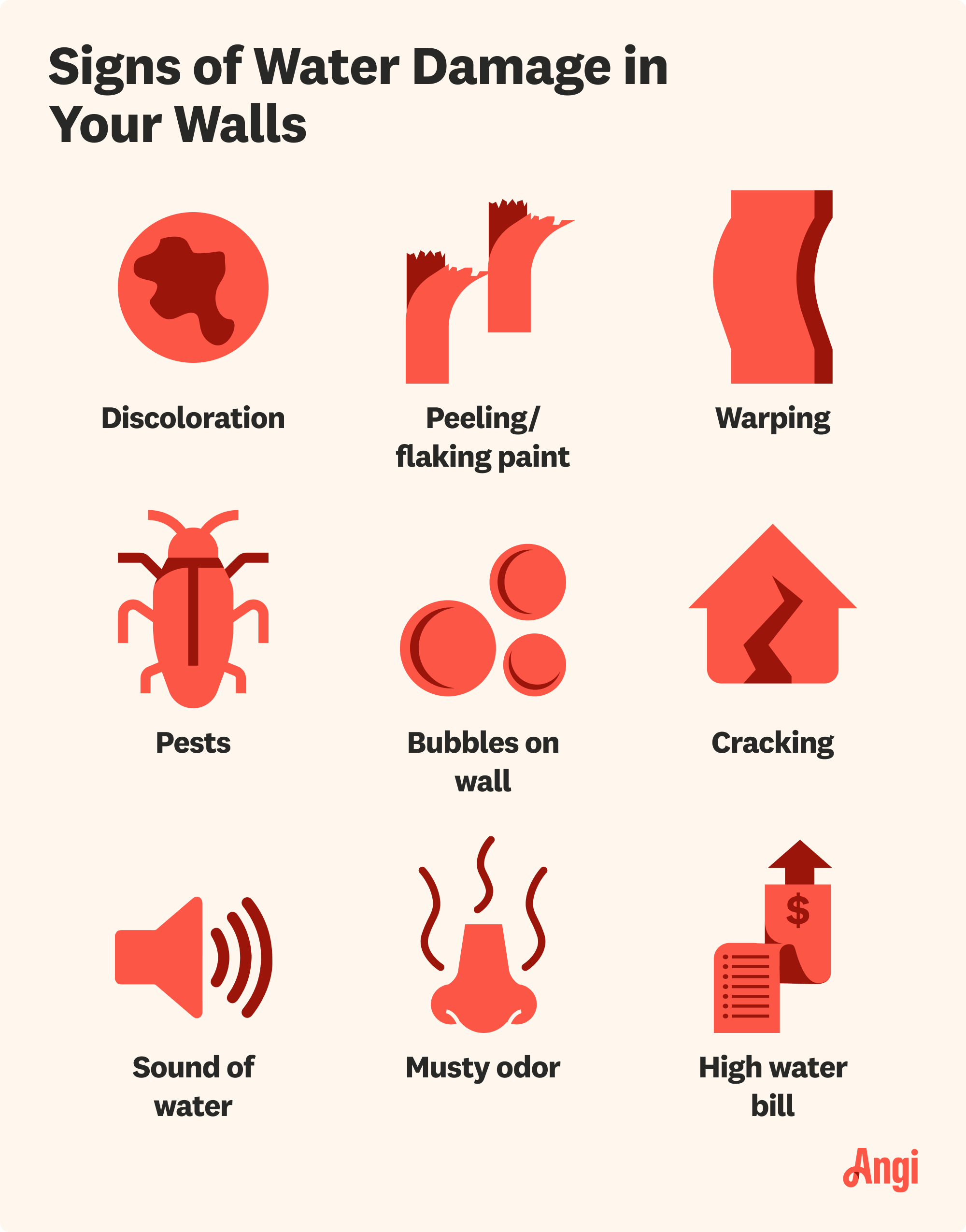
Fire damage restoration costs vary widely based on the extent of the damage. Learn how to assess your home and estimate your total after a fire.
Keep calm and stay dry with these fixes and prevention tips


Water damage can cause paint to peel, bubble, and blister.
When water sits on walls and ceilings for too long, it can lead to mold.
Look for early signs of water damage to prevent costly problems.
Water and paint are not a great mix because when water is left sitting on your painted walls and ceilings, it can create serious damage. Not only can it affect the look and integrity of your walls, but it can also lead to mold growth, which can be harmful to your health. Learn how water damage can affect your walls and ceilings, along with early signs to look out for and tips to prevent future water damage.
When water damage is discovered, turn off the power and disconnect all electronic devices from any affected area.
When your painted walls are subjected to water or too much moisture, it can create unsightly and costly problems, such as bubbling and blistering, as well as mold damage.
When water seeps behind the wall, it can cause the paint to separate from the wall, creating bubbles and blisters. With time, these bubbles and blisters can cause the paint to peel and chip off the wall. The various minerals in water can also discolor the paint, causing stains.
If moisture sits on the wall for too long, it can also affect its structural integrity, rotting or deteriorating the wall materials.
Mold loves to grow in damp environments, so when moisture sits on the wall for too long, mold spores, which look like dark spots or patches, will appear. In addition to being an eyesore, mold can cause health issues like allergies and respiratory problems. It can also eat away at the paint, causing it to crack and peel.

The longer water sits on the wall, the greater damage it can cause. To catch it early, look for these telltale signs of water damage on the wall.
Dark spots or other discoloration
Paint peeling or flaking
Bubbles or blisters on the wall
Musty odor emanating from the wall
Paint that feels soft or squishy to the touch
Warping or swelling of the wall

As soon as you notice any water damage, turn off and unplug any nearby electronics to prevent potential electrical fires. Then, follow these steps.
investigate the area to find the source of the water damage. Start by tracing the water's path, seeing if you can find the leak. Many leaks start from the roof, but nearby gutters, windows, and doors can also cause leaks. Plumbing and home appliances are other common leak culprits.
If you can't find the source, you can rent or purchase a moisture meter. You can also call a local water damage restoration service to investigate and fix the problem for you.
After identifying the source, begin drying the area. To expedite the drying process, use towels, fans, open windows, and dehumidifiers.
Once the area is dry, use a paint scraper to scrape away any bubbles or blisters in preparation for repainting.
If any mold is present, you can apply a mold-killing solution to clean it. However, if you have allergies or any respiratory problems, like asthma, it's best to call a pro to remove the mold to prevent any health issues.
Now that you've gotten rid of the mold and chipped off the paint bubbles, you can start priming and painting the wall to restore its original appearance or give it a makeover with a fresh new color.
When it comes to water damage, the best offense is good defense. Here are several maintenance steps you can take throughout the year to prevent water damage to your walls and ceilings.
Regularly inspect your roof for any damaged or missing shingles
Clean the gutters and downspouts when they accumulate debris
Direct downspouts away from the foundation
Seal any cracks or holes in your exterior walls and foundation
Make sure all windows and doors have tight seals; replace any damaged weather stripping
Regularly inspect plumbing for leaks or corrosion
Make sure bathtubs, showers, and sinks have adequate caulking around their seams
You can save money on a pro by fixing your painted walls yourself. It’s an economical option for handy homeowners who are dealing with minor bubbling issues. However, if the bubbling is extensive or due to underlying moisture problems, it’s worth hiring a water damage restoration pro instead, as they can accurately diagnose and address the root cause to prevent further (and more costly) problems down the line.
From average costs to expert advice, get all the answers you need to get your job done.

Fire damage restoration costs vary widely based on the extent of the damage. Learn how to assess your home and estimate your total after a fire.

Your dry rot repair cost will depend on factors such as the extent and size of the damage and its location within your home. Here's what you need to know.

Ozone treatment can help with lingering smoke odors. Learn about ozone smoke removal costs to get an accurate idea of how to budget for this service.

Learn the common reasons water drips from your AC vent and how to identify and address the root issue.

What does dry rot look like? Knowing what signs to watch for will help you identify and treat infections before they’re too big to fix.

A small ceiling leak could be the sign of a large problem and potential water damage. Use this guide to learn how to find, fix, and prevent a leaking ceiling.